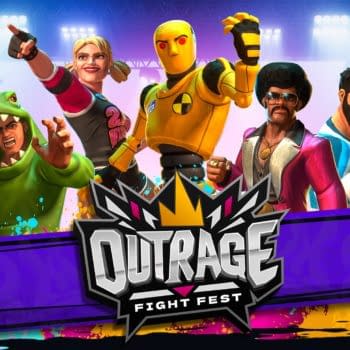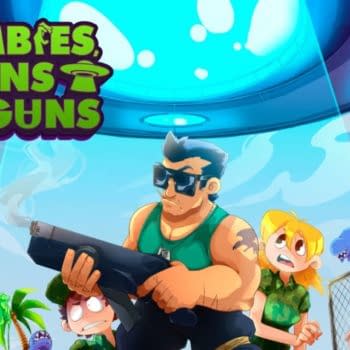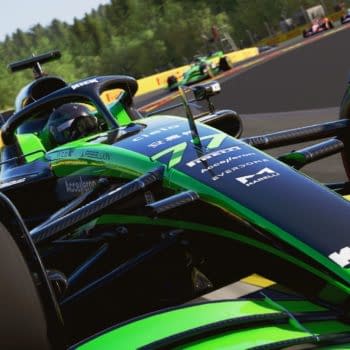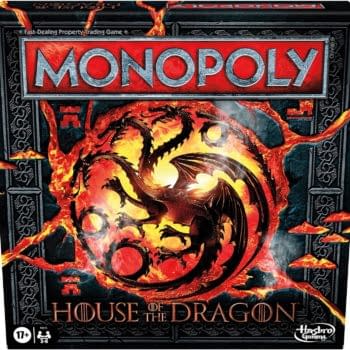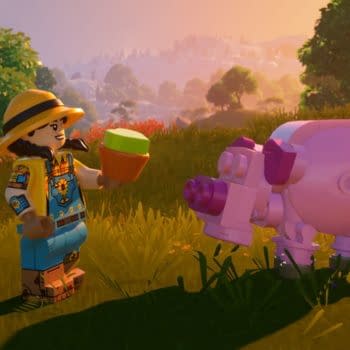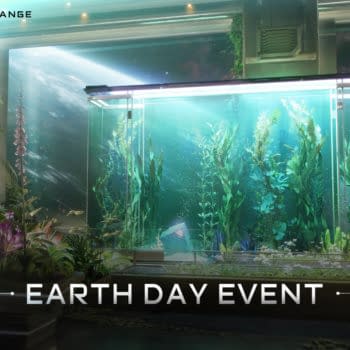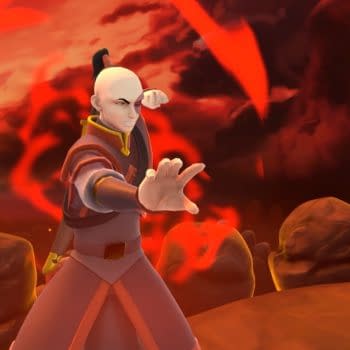Posted in: Games, Interview, Video Games, VR | Tagged: CoatSink, interview, jurassic world, Jurassic World: Aftermath, Universal Games, vr
Interview: Jurassic World Aftermath Devs Discuss Part 2
A short time ago, Coatsink released Jurassic World Aftermath: Part 2, a follow-up to the initial Oculus release of the VR experience. Part 1 of the game set everything up nicely as you explored the soon-to-be-destroyed island as you attempt to find information on the island with the help of an unseen guide telling you where to go. All while trying not to be attacked and eaten alive by the dinosaurs who roam free at the moment. Part 2 serves as the wrap-up to the content as they bring the story to a close. We had a chance to chat with Brian Gomez, (left) Executive Producer, Universal Games and Digital Platforms, and Jon Davies, (right) the Head of Narrative at Coatsink. The two discuss the development and planning of the second part, along with a few other topics.
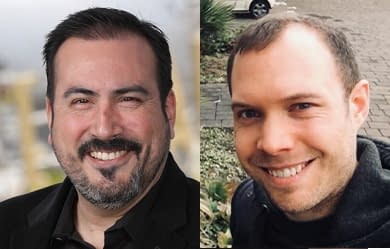
BC: Hey Jon and Brian! First off, how have you guys been doing over the past year?
Brian: I've been doing great! Here on the Jurassic World games team, it's been a big year. The pandemic barely slowed us down. If anything, we got busier because all those players stuck at home in lockdown were in need of new content, and the development teams I work with have been busy dropping new content and launching amazing new titles like Jurassic World Aftermath: Part 2 and Jurassic World Evolution 2.
Jon: Extremely busy, thanks! Jurassic World Aftermath has been an absolute privilege to write, but certainly not the only project I've been involved with over the past twelve months – Moonglow Bay launched only a few weeks after Jurassic World Aftermath: Part 2, developed by our good friends at Bunnyhug. It's been a busy time for the studio but with Jurassic World Aftermath: Part 2 complete, we're taking stock, developing some new prototypes, and looking to the future.
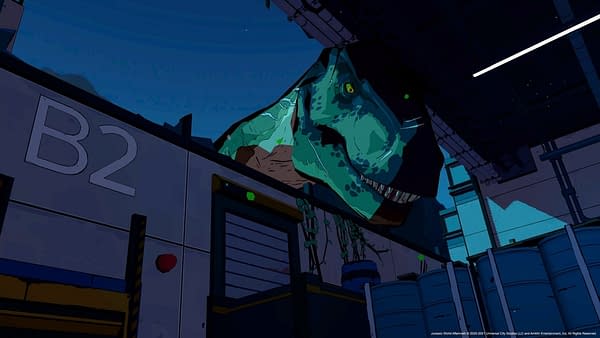
What's it been like to see the success of the game prior to Part 2 being released?
Jon: The reception to the initial release was fantastic. For my part, it was incredibly daunting creating an original story for one of the world's most beloved franchises, particularly with all the constraints and technicalities of VR while recognizing the dedication and expectations of the fanbase. Fortunately, the help and support we received from Brian and the team at Universal Games and Digital Platforms were second to none, and the reception to our new characters and scenarios was positive all around. Our goal was always to try and create the closest possible experience to actually standing on Isla Nublar, combining the wonder and tension of the movies into an unforgettable thrill ride, and the team absolutely delivered. In particular, it's been extremely gratifying to read so many comments about the art style – how certain players didn't initially think a game with these visuals could be scary, only to put on a headset and be proven so, so wrong. Again, all credit to the team.
What was it like to initial work on the game and be able to branch off the newly formed universe that Jurassic World had created?
Brian: When Coatsink first approached us, it was clear that they're huge fans of the franchise and understood what makes our dinosaurs both awe-inspiring and terrifying. They had a clear vision of the type of game they wanted to create, but we also wanted to ensure it fits within the established Jurassic World narrative and didn't put any dinosaurs or familiar characters in places or situations that would conflict with what fans already knew. There were a number of locations and spots on the timeline that were considered, so we helped Coatsink narrow in on a story that weaves in bits of established Jurassic World lore but also gave them room to create a wholly new experience.
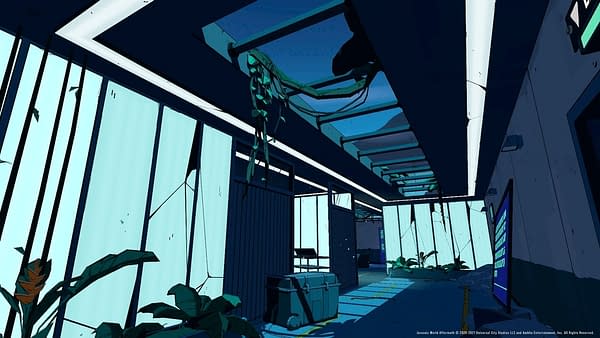
When you were developing the game, did you know you were going to break it off into two parts ahead of time? Or was that more a decision made in development?
Jon: The game was conceived in 2019 as a single 6-8 hour VR experience, with a complete story signed-off. However, the pandemic and subsequent shift to remote work hamstrung our ambitious production schedule, and even though we had the ideas and gameplay to sustain the playtime, it became clear we could no longer deliver on the quality that players expected, or frankly, the franchise deserved. So rather than create something rushed, we made the joint developer-publisher decision to create a shorter, polished experience for the initial release, then start fresh on Part 2 with more development time and greater scope. The extra time allowed us to pour far more dinosaurs, cool sequences, and impactful story moments into the project than we ever initially planned.
We're not going to spoil anything here, but what made you choose the specific break in the story to define where Part 1 ended?
Brian: In every Jurassic World film, there's a point where what was already a dangerous situation suddenly gets so much worse, usually through a combination of hubris, chaos, and dinosaurs just doing what comes naturally! We knew there would be several pivotal moments where Mia and Sam's situation goes from bad to worse, to almost impossible to survive. We wanted to steadily increase the tension from one objective to the next, but when we made the decision to break it into two parts, we had to do some significant re-arranging of the story so that the moment that became Part 1's cliffhanger took place at a different point than originally designed. To Coatsink's credit, and especially Jon, they were able to give us a scary cliffhanger, but also left room for the other big moments in Part 2 to breathe and stand on their own.
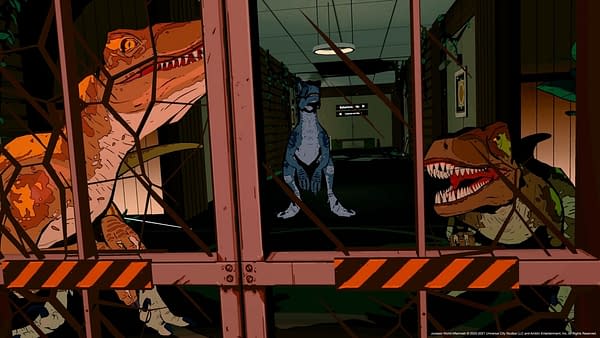
As developers, what was it like having a completely separate part of the game that essentially carried the narrative not being connected at the start?
Jon: It was certainly a first for me, and it was tough knowing how much exciting story content we had in the works (and in some cases, already recorded the dialogue for) that players just wouldn't get to experience on initial release. However, it also meant all the hard work in terms of narrative direction had already been done. Aside from a few reworks and polishing, writing the dialogue for Part 2 was straightforward. However, there were still some crucial unknowns for the rest of the team. From a gameplay perspective, we knew the kind of locations the player would be visiting and why, but we didn't know WHAT the player would be doing or how we'd make it fresh and exciting. For Part 2, all focus was on the design team to take the established mechanics and make them new. No easy task.
What was the process like in deciding how to wrap up loose ends that people may have forgotten between parts?
Brian: We were cognizant that a player that downloaded the game on day one and completed it in December 2020 might not remember all those little plot details nine months later. We wanted something like an "as previously seen on…" recap for the player, like you'd see between seasons of a television show. But in VR, you can't immerse the player in the game world and then show them a pre-rendered video recap. So, Coatsink came up with a cool opening credits sequence for Part 2 that would not only set the mood, but also remind the player of key events from Part 1. I wasn't sure it would work when they first pitched it, however, once I experienced it in VR, it worked really nicely.
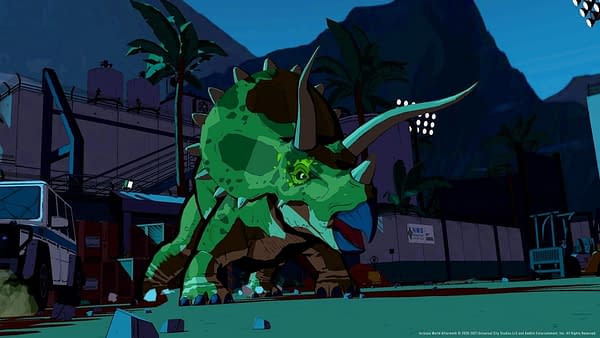
The T-Rex in Part 2 feels a lot more threatening than in Part 1. Was that by design to ramp up or did you change things up after seeing reactions to the first one?
Jon: The fan reaction to the grand entrance of the T-Rex in Part 1 was spectacular, but when that sequence was originally being storyboarded, we only had plans for a second non-interactive cutscene. The inclusion of the (incredibly tense!) T-Rex/recycling plant sequence in Part 2 was entirely the result of splitting the game. With the extra time and freedom to prototype new gameplay and build a dedicated location to facilitate this encounter, we were able to fulfill this unspoken promise. As a result, the team created one of the most exciting sequences in the game and, according to players, one of the most memorable moments in VR.
A lot of the raptor encounters feel a lot more challenging as well. How was it to make them more interesting without being a repeat of the previous encounters?
Brian: If players completed and survived Part 1, then it means they've already developed some skills for reading Velociraptor body language and understanding their audio cues. But we also didn't want to arbitrarily buff the Velociraptors for the sake of making Part 2 more challenging. I personally love stealth games because a big part of those games is adapting to new environmental challenges that make stealth harder. So this time around, the players will encounter new ground surfaces that make traversal noisier. We'll give them new tools that are great at solving a puzzle, but not so great at doing it quietly. We play with lighting conditions so that players need to make sure they're using darkness to their advantage. And, my favorite new addition is the curious little "compies" (Compsognathus) – they're basically two-legged alarm systems that will give you away at the worst possible moment!
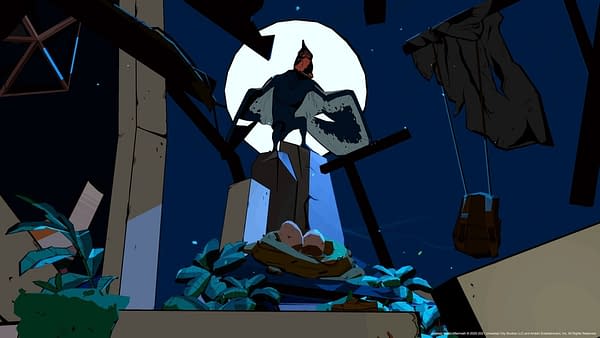
Are there any particular parts about Part 2 you're most proud of that players should go the extra mile to check out?
Brian: You would think after two years of development, I'd be pretty desensitized to being killed by Velociraptors or eaten by a T-Rex, but that's not the case. The first time I had a close encounter with the T-Rex and realized just how sensitive that "motion-based" vision of hers is, I was both delighted and terrified! And I won't give away the final cat-and-mouse section against the Velociraptors, but Coatsink didn't tell me what they had planned until I experienced it in the prototype, and I just about "noped" right out of it! Sheer terror.
Jon: Part 1 contained a lot of narrative setup but very few answers… but it all pays off in Part 2. We hear a lot more from Dr. Ian Malcolm who plays a pivotal role in Mia's arc, and as many players noted, the final two hours feel like the culmination of all that came before; like the game shifts into a whole new gear. However, the section I love most in Part 2 is the "gallery" sequence, as we explore an underground hall full of treasures and Mia talks about how it reminds her of home. This is a crucial story moment, delivered sublimely by Laura Bailey, scored brilliantly by Vince Webb, and presented in this gorgeous environment. From a writer's perspective, it can be a challenge to sell the idea of a sequence like this – calm, with very little gameplay – because a whole location still needs to be conceived, designed, modeled, and lit. But the final result is not just my favorite few minutes of Jurassic World Aftermath, but probably of anything we've created at Coatsink.
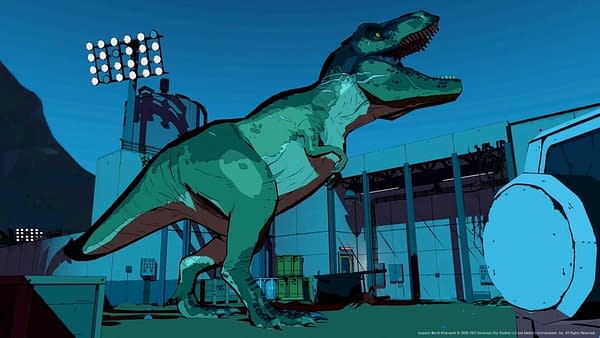
What do you hope people take away from Part 2 and the VR experience?
Jon: First and foremost, like any game, we want people to have a good time. To feel elated, accomplished, and exhilarated coming out of the experience, and that all the tension and puzzle-solving on Isla Nublar was worthwhile. Second, I hope players come away with a sense of, well, hope. When possible, the narrative should be more than just the pretext for getting players from A to B. It's an opportunity to say something and create a memorable, meaningful experience. So I hope that emotional impact – and the whole experience in general – sticks with players for longer than the time it takes to watch the credits.
What are you guys working on going into next yet?
Jon: Quite a few things! As mentioned, we've found some time at Coatsink to conduct some R&D, develop prototypes, and continue work on a few internal projects that were previously put on hold to ship Jurassic World Aftermath: Part 2. While I can't divulge anything specific, I can at least say it's a really exciting time for the studio and I can't wait to see what the next few months have in store.





